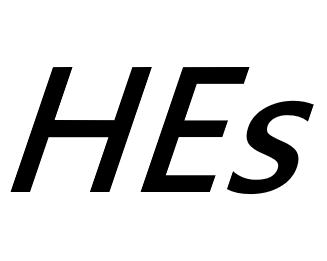You actually believe that?
It seems that all the cosmetic “anti-glycation” propaganda started with Olay, a P&G brand. P&G began a frenzy of “word creation” at the beginning of 2015 after several of their best niacinamide cosmetic formulas patents expired, and after experimenting with several niacinamide blends, they launched concepts such as “anti-glycation”, “yellowing reduction”, and “lightening”. The marketing concept included new words such as “melanin matrix” and “glycation” (which were at least new to consumers). I can imagine P&G’s marketing saying to a bunch of brands launching niacinamide products: “You copycats copied my niacinamide formula after my old patents expired, and now I’m selling the new patented ingredient, if you can copy it! (laughs 😀!)
The concept of “glycation” is something we’ve all probably heard of at one time or another – after all, we all have relatives, neighbors or colleagues who might have diabetes. But when cosmetics start to advertise to you that we normal people also have Advanced glycation end-products (AGEs) in our skin and need anti-glycation to achieve firmness and whiteness. Remember to always ask P&G back: Is it true that people with low blood sugar have better skin condition?
Apparently, there is little biomedical data about how much the average person’s skin is glycated. Or rather, biomedicine is now more concerned with giving anti-glycation products to diabetics! Even though the success rate of anti-glycation drugs has been less than 10% pass rate in the last decade. P&G threw out the theory that niacinamide could anti glycation when there was no rigorous data to support it. In 2020, P&G announced revolutionary ingredient with in vitro experiments showing that their patented ingredient can anti glycation in skin tissue! Glycoxyl? Oh, it’s just a white lotus extract!
Glycation is a complex concept that can be understood as: the reducing sugar in the body sticking to an amino acid under some special circumstances, and then after series of reactions, it becomes an Advanced Glycation End product AGEs. I have explained in this my video below. (Not yet professional) and AGEs will bind to the receptor protein RAGE, will increase our body a lot of free radicals ROS, too many free radicals will naturally increase inflammation and other problems, resulting in our skin yellowing, reduced elasticity. Wait a minute ~ among AGEs impacts, the skin deterioration should be a minimal impact! After all, with all the symptoms of diabetics, you should hear them even if you don’t see them! Well ~ it seems that glycation for the cosmetics company, the impact is ONLY about the skin condition. (Please note that they also know how to avoid medical common sense, often using “relative” to indicate that their focus is so “relative”)
It seems that P&G doctors have talked about the damage of “glycation” somewhere. Even their patented ingredient “Glycoxyl” is not promoted in their home country, the United States. (The reason P&G does not sell “White Lotus” Glycoxyl in the United States, I had thought that the FDA does not allow cosmetic items to promote anti-glycation, but it seems that many unknown creams on the Amazon are described by “anti-glycation”?) But in the Chinese market, P&G’s Olay crazily propagandize “anti-glycation white bottle”, “anti-glycation reduce yellowing”, under P&G’s fanning the flames, such as ROHTO and other brands have also launched their own anti-glycation essence, it seems they all have their own patented ingredient. OK, we go back to the theory of glycation, that the aldehyde group of reducing sugar and amino acids stick together (nucleophilic attack on the aldehyde group by the nitrogen of the amino group), then a simple alcohol at this time can protect the aldehyde group from attack. So why is it that no cosmetic company has come out and experimented with glycerin and told everyone that glycerin shows “anti-glycation” in vitro, so that all moisturizers with glycerin can claim to anti-glycation? (P&G! I will definitely thank you for them.) Let’s go back to the experiment published by P&G that white lotus extract “Glycoxyl” can anti-glycation, (published by P&G in collaboration with Shanghai Dermatology Hospital) indeed P&G took the lead on this experiment, they were one step ahead and claimed in the literature: “This is the first in vitro tissue topical anti-glycation experiments with a successful ingredient! “
I don’t know how rigorous can be in this P&G paper, but I’m more surprised that Shanghai Dermatology Hospital, one of the top-ranked dermatology hospitals in China, has gone beyond the dermatology and started a local endocrine-related anti-glycation study on the skin! (Does the doctor who wrote the literature really know about “glycation”?) As a phytochemical alcohol, is it appropriate to claim “the first topical in vitro anti-glycation” experiment when there is no study on metabolism and pharmacology after transdermal absorption? Why is there no follow-up in vivo study? (I doubt they can do it! Laughs 😀) Going back to the success rate of anti-glycation drugs over the last decade that I mentioned earlier, I think that in vitro trials of anti-glycation are basically meaningless!
I admit that topical skin anti-glycation can provide lot on skin conditioning, just like your skin boosts successfully by using antioxidants, and the benefits of topical free radical reduction have been proven in many experiments, such as the vitamin c and other floraextracts polyphenols. But with the current level of research, topical anti-glycation can only be described as a nice wish! I certainly hope it will come true, but I don’t think it will be cosmetic companies, such as P&G!
Well, to answer the question of the title.
When cosmetics tell you they can anti glycation?
Hurry up and run ~ as far as you can!
